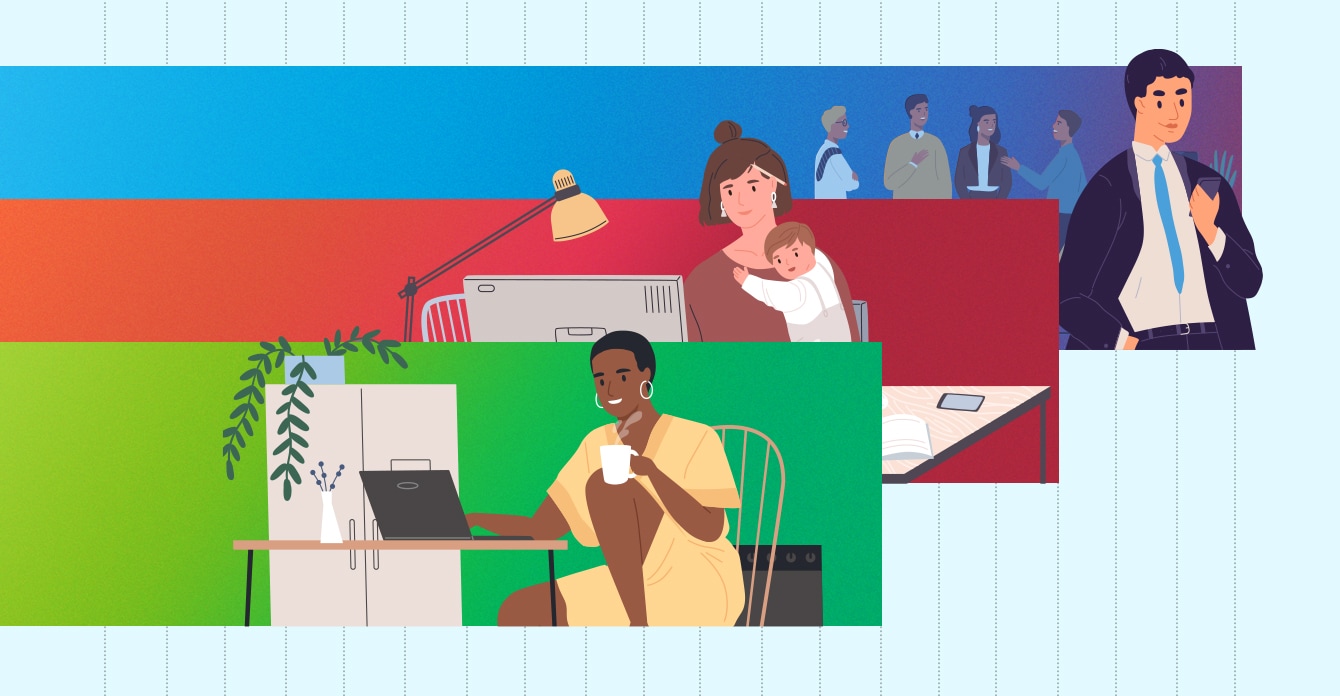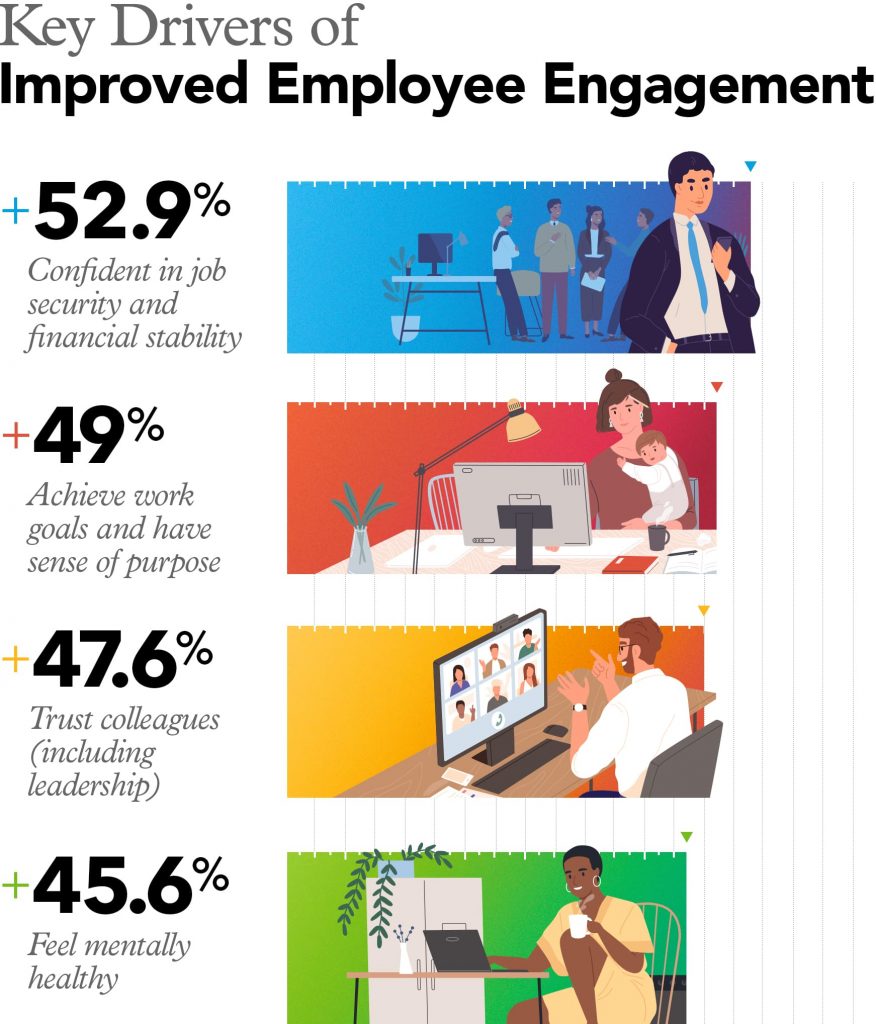The COVID-19 pandemic has prompted countless discussions surrounding shifts in your audiences’ attitudes and behaviors and how to best engage key constituencies. Missing from so many of these discussions, though, is one of your most important audiences: Your employees.
Some of the most influential brand ambassadors around, your employees are on the front lines, strengthening the connection between your constituents and your brand. Keeping them engaged and happy is critical for their own health—and a healthy bottom line too.
Studies clearly show the positive relationship between engaged employees and satisfied customers. And that relationship is all the more important during this time of social distancing, when so many brand-to-constituent interactions have become increasingly digitized.
Sources: McKinsey & Company, ZDNet.
So how do you drive that engagement when so many of your employee interactions are socially distant too? Consider these best practices.
Adopt a tailored, two-way approach.
As we begin various stages of reentry, concerns about safety and security—financial and physical—remain top of mind among employees, but their range of concerns is actually much wider. Employees who have children might have different stressors from those who don’t, while younger employees who are less financially stable have different pain points from those who’ve built up a stronger financial base.
In order to understand the range of sentiments within your own organization, an authentic, two-way dialogue that is sensitive to employee needs is critical.
Encouraging such dialogue between leadership and employees allows employees to share their unique perspectives and grants them some degree of control over their work life. Leadership can then segment employees based on their shared concerns and identify the best methods of support to help everyone feel secure and engaged at work.
Redefine culture and purpose.
Several months of remote (or socially distanced) work conditions can erode the employee camaraderie taken for granted during “normal” work, and harm employee engagement and productivity. Face-to-face connections, such as impromptu standup meetings at someone’s desk, coworker lunches in the office kitchen, and company social events are virtually impossible during this time of social distancing.
Kate Lister, president of Global Workplace Analytics, estimates that 25 to 30% of the US workforce will still be working from home multiple days per week by the end of 2021—and that doesn’t even take into account the potential second wave of COVID-19 that is still looming. In other words, those invaluable face-to-face connections are likely to be hindered for quite a while.
Encouraging employees to get some facetime with one another—even if it’s via video chat—can combat feelings of isolation and rebuild a sense of trust among employees. Aim to recreate company rituals with events like virtual happy hours or lunches so employees can reconnect with each other and the company’s purpose at large.
Invest in employee mental health.
Recent studies have shown a sharp spike in the number of Americans who have experienced mental health issues, ranging from symptoms of anxiety disorder to suicide ideation. Further, nearly 40% of employees in a recent survey from Harvard Business Review said that nobody at their company had asked if they were doing okay mentally.
The same study argues that one silver lining of the COVID-19 pandemic is the potential for employers and managers to destigmatize mental health issues in the workplace. In addition to offering and encouraging the usage of mental health resources, managers should lead the charge for better mental health by example.
There is evidence that when leadership is vulnerable and open about their own struggles, employees feel comfortable voicing theirs. The goal should be to build a culture of connections that encourages regular check-ins and flexibility, which work to alleviate mental strain on employees and foster a closer relationship between them, leadership, and the company itself.
The bottom line: Think of having engaged employees as an extension of your marketing program. Doing so strengthens your organization’s relationship with external constituencies, improves customer experience, and drives brand loyalty as a result.
Interested in additional tailored strategies to better connect with internal and external constituencies and further strengthen your brand? Contact us to find out how.












